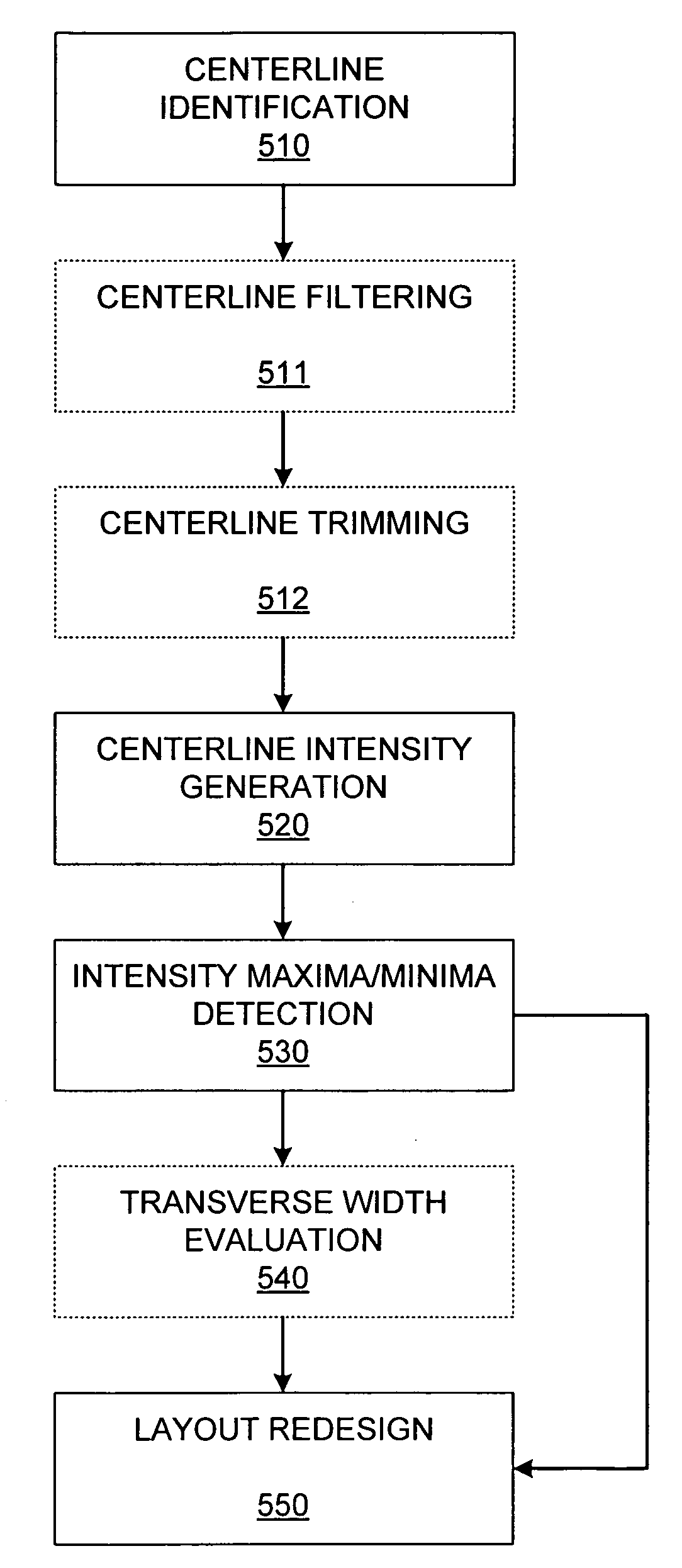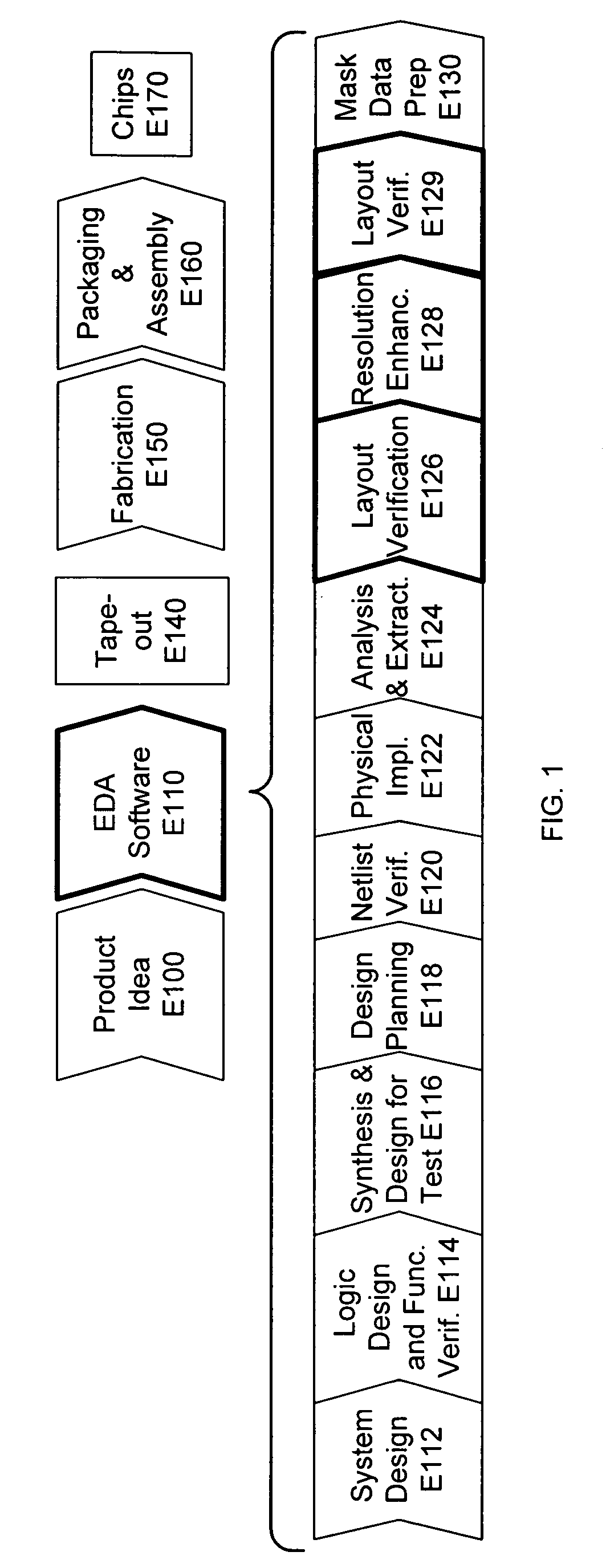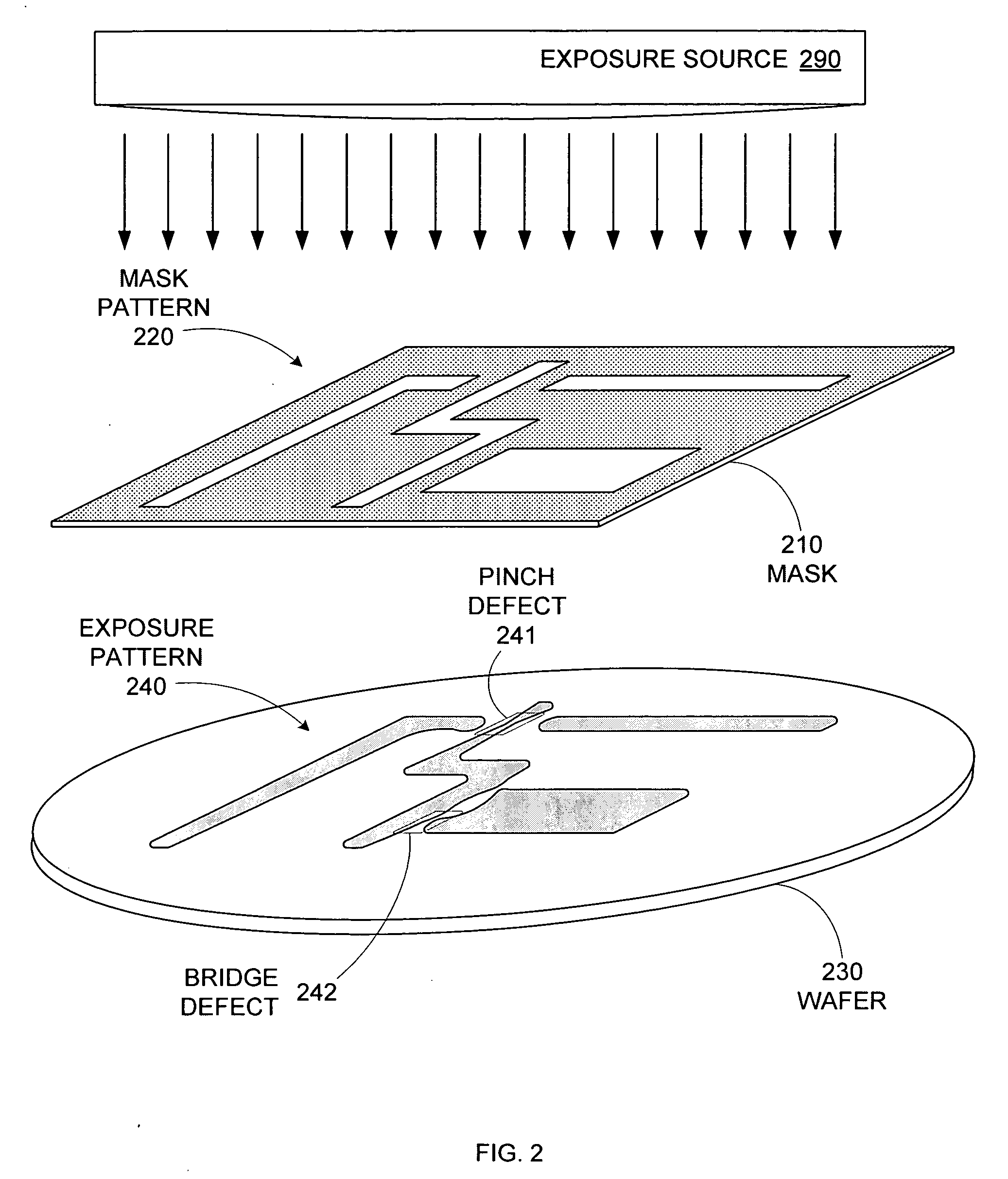Centerline-based pinch/bridge detection
- Summary
- Abstract
- Description
- Claims
- Application Information
AI Technical Summary
Benefits of technology
Problems solved by technology
Method used
Image
Examples
Embodiment Construction
[0043] Modern IC designs have evolved beyond the capabilities of physical verification, and now generally require some sort of simulation-based verification to detect potential defect-inducing layout configurations. However, conventional simulation-based verification, which can provide accurate detection of portions of a mask layout likely to generate pinch / bridge defects, can also be too computationally expensive to perform efficient layout checking.
[0044] By applying a centerline intensity-based layout verification technique, even the most complex and dense IC layouts can be quickly and accurately evaluated for defect-inducing regions. Specifically, by performing lithography simulation only along selected centerlines and check positions of a mask layout, the defect detection benefits of simulation-based verification can be achieved at a much lower computational cost.
[0045]FIG. 4A shows an embodiment of a computer system 400 that can perform layout verification based on centerlin...
PUM
 Login to View More
Login to View More Abstract
Description
Claims
Application Information
 Login to View More
Login to View More - R&D
- Intellectual Property
- Life Sciences
- Materials
- Tech Scout
- Unparalleled Data Quality
- Higher Quality Content
- 60% Fewer Hallucinations
Browse by: Latest US Patents, China's latest patents, Technical Efficacy Thesaurus, Application Domain, Technology Topic, Popular Technical Reports.
© 2025 PatSnap. All rights reserved.Legal|Privacy policy|Modern Slavery Act Transparency Statement|Sitemap|About US| Contact US: help@patsnap.com



